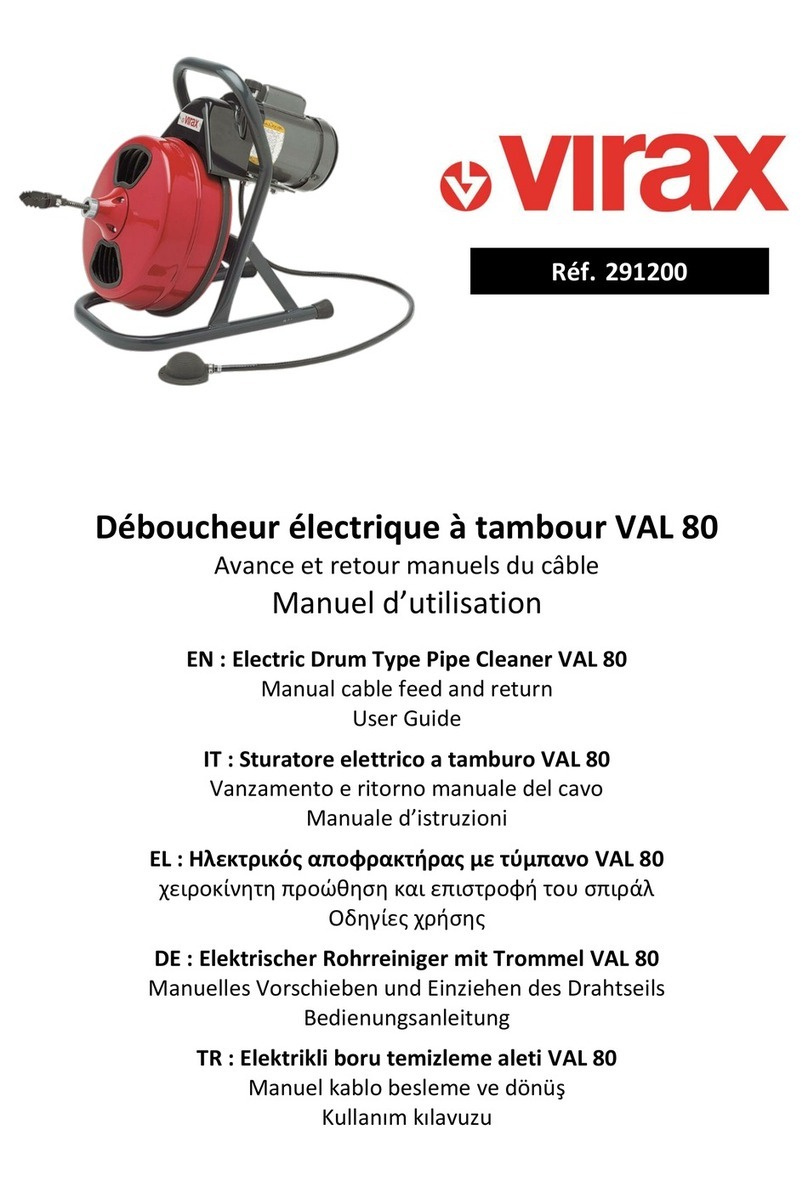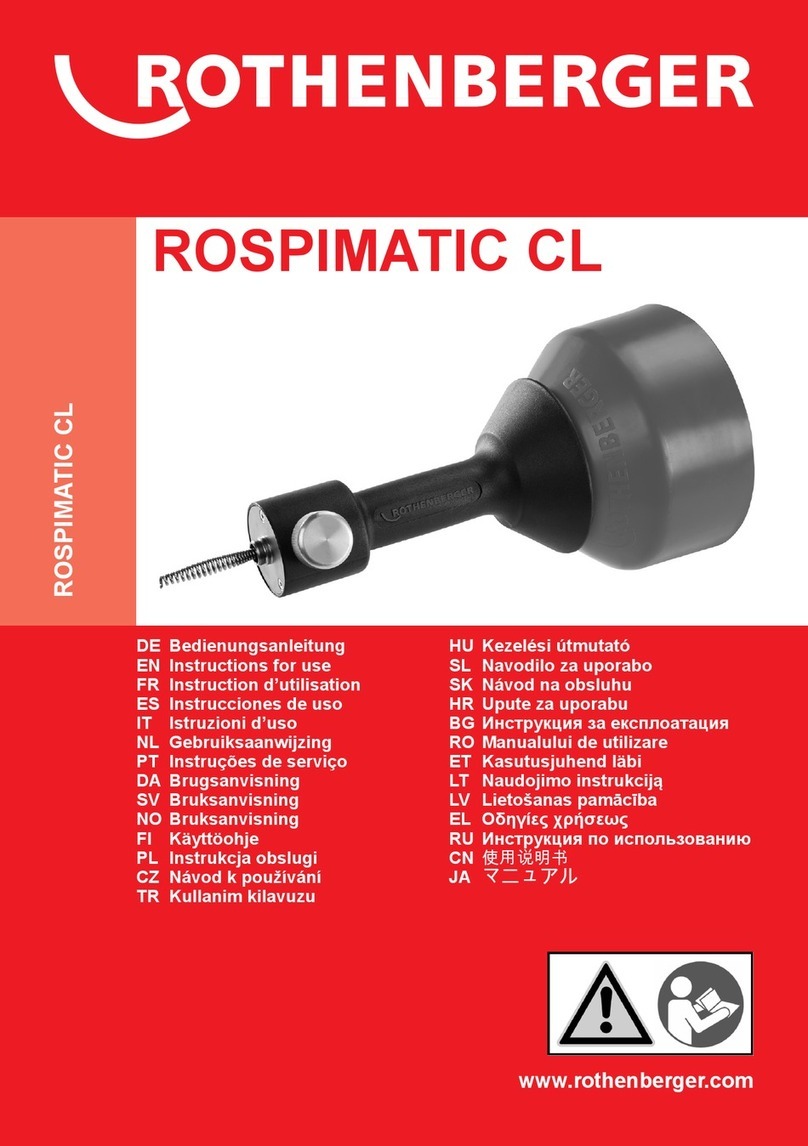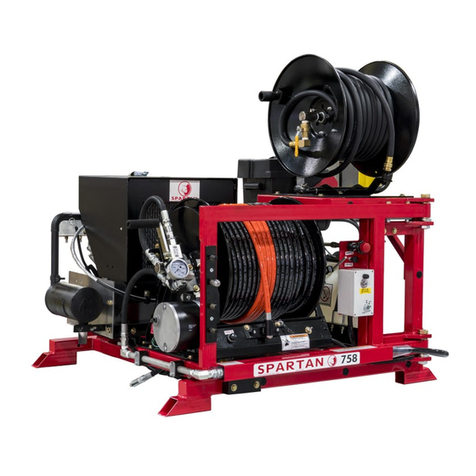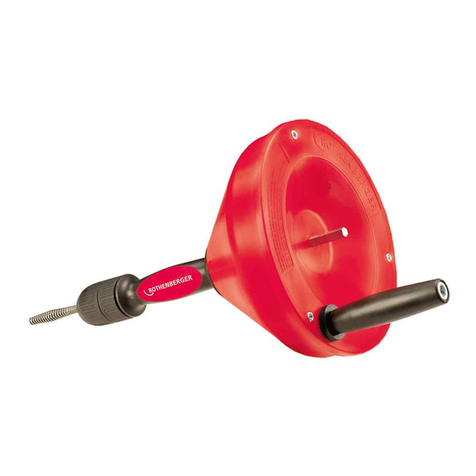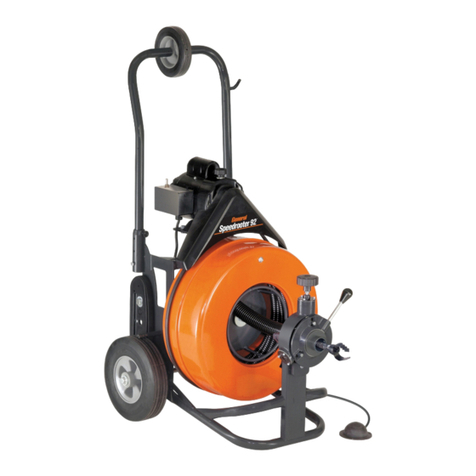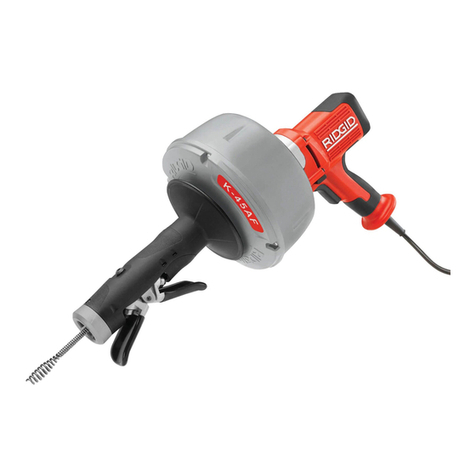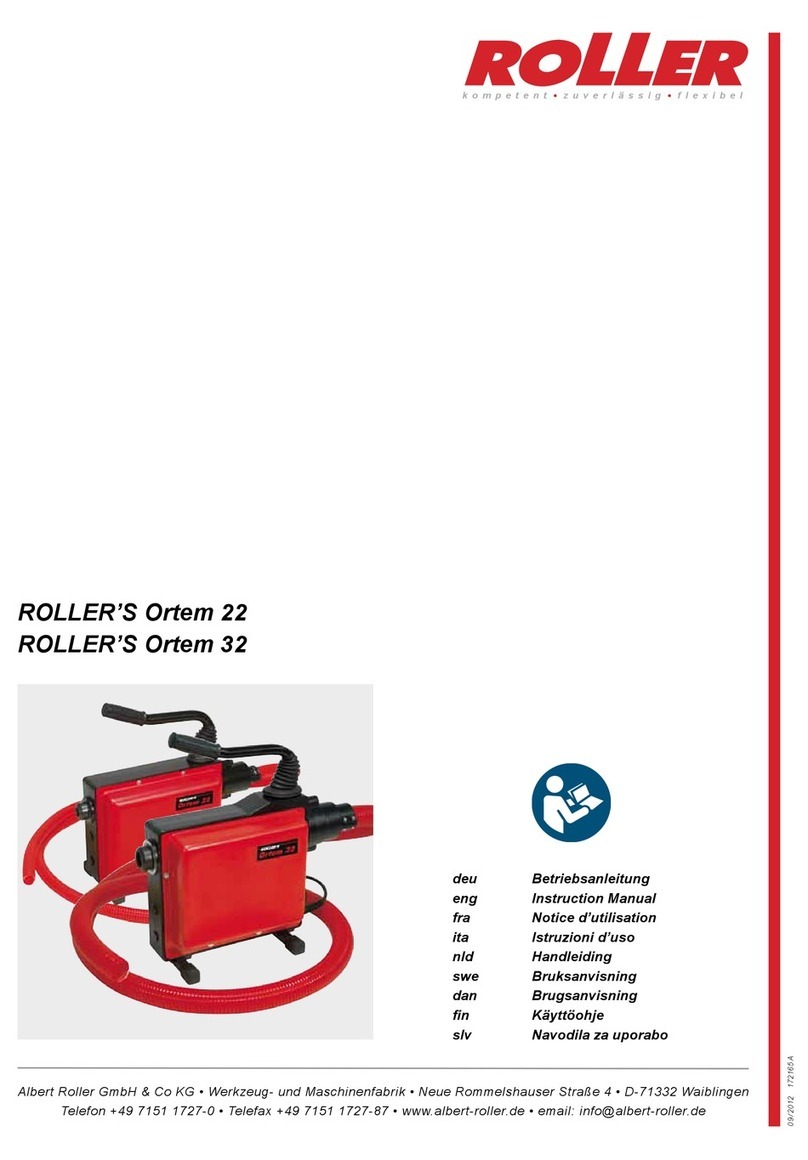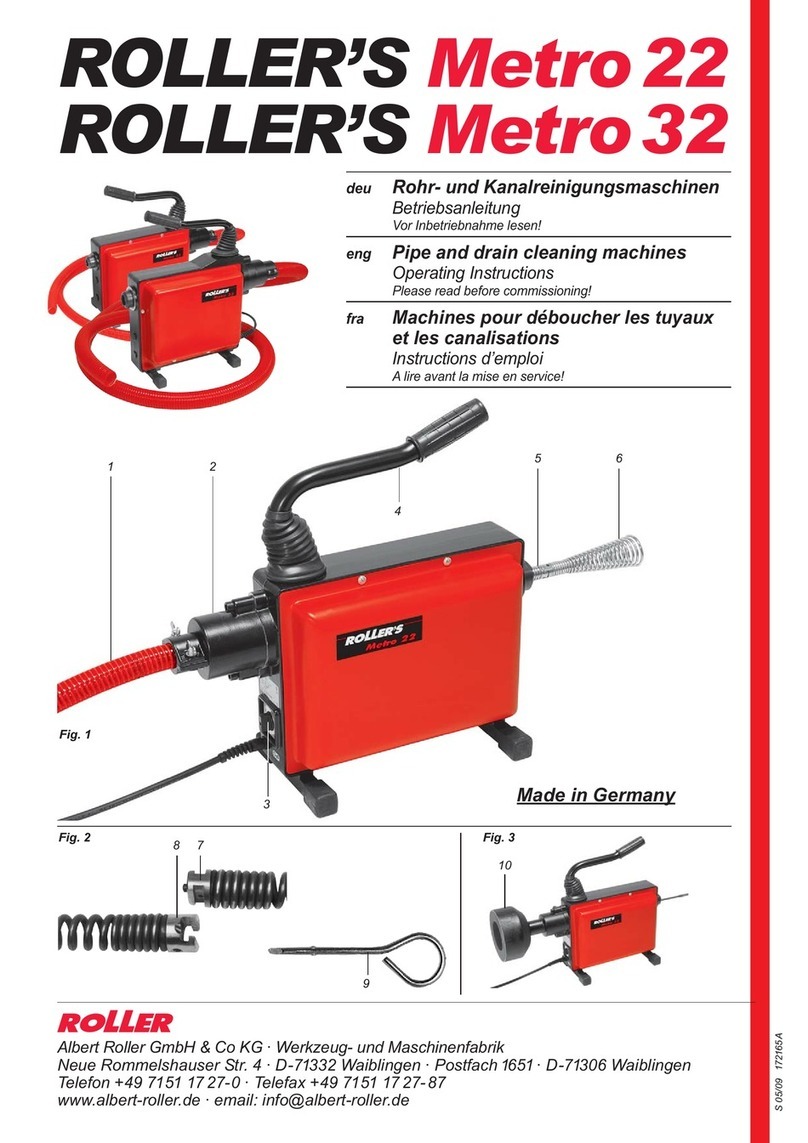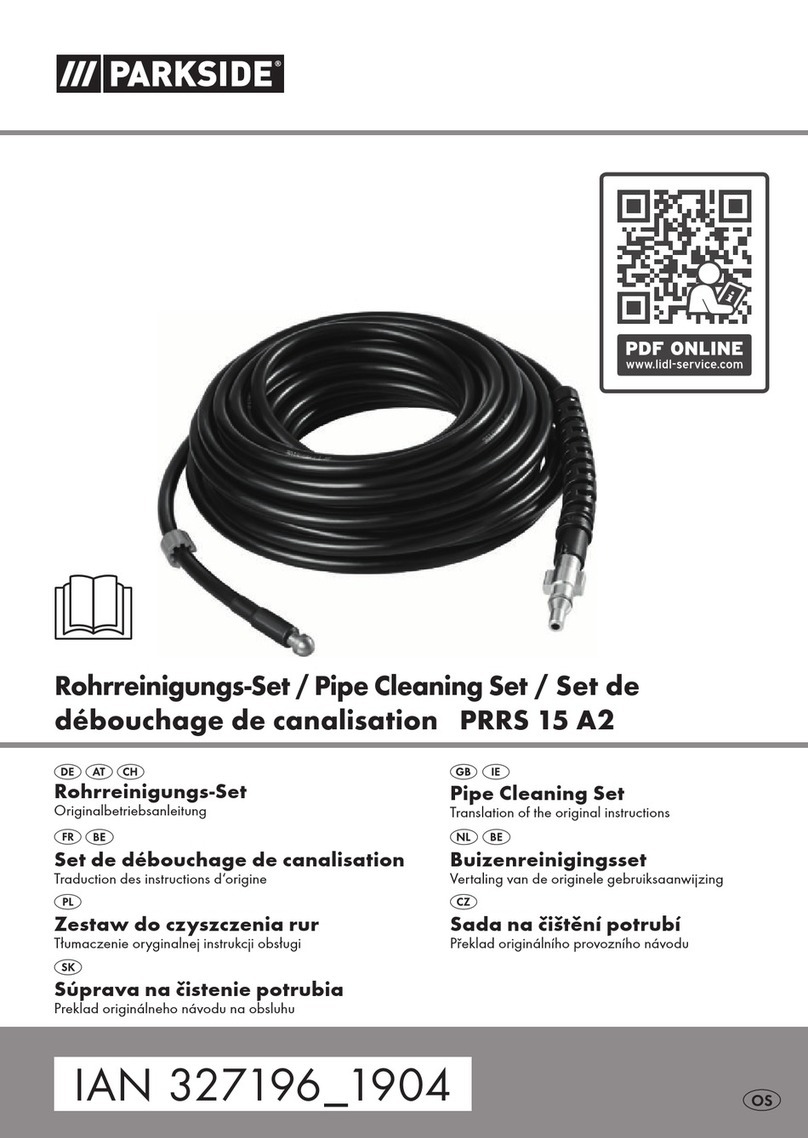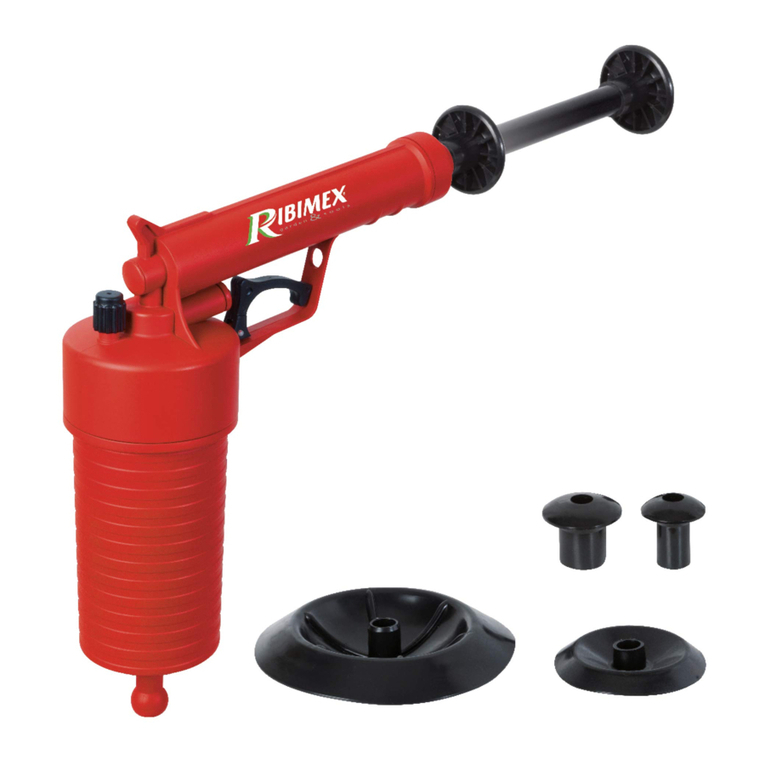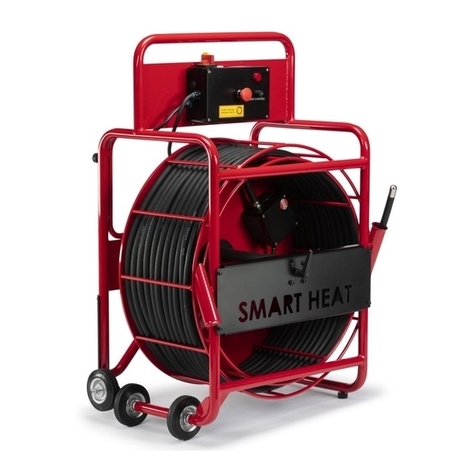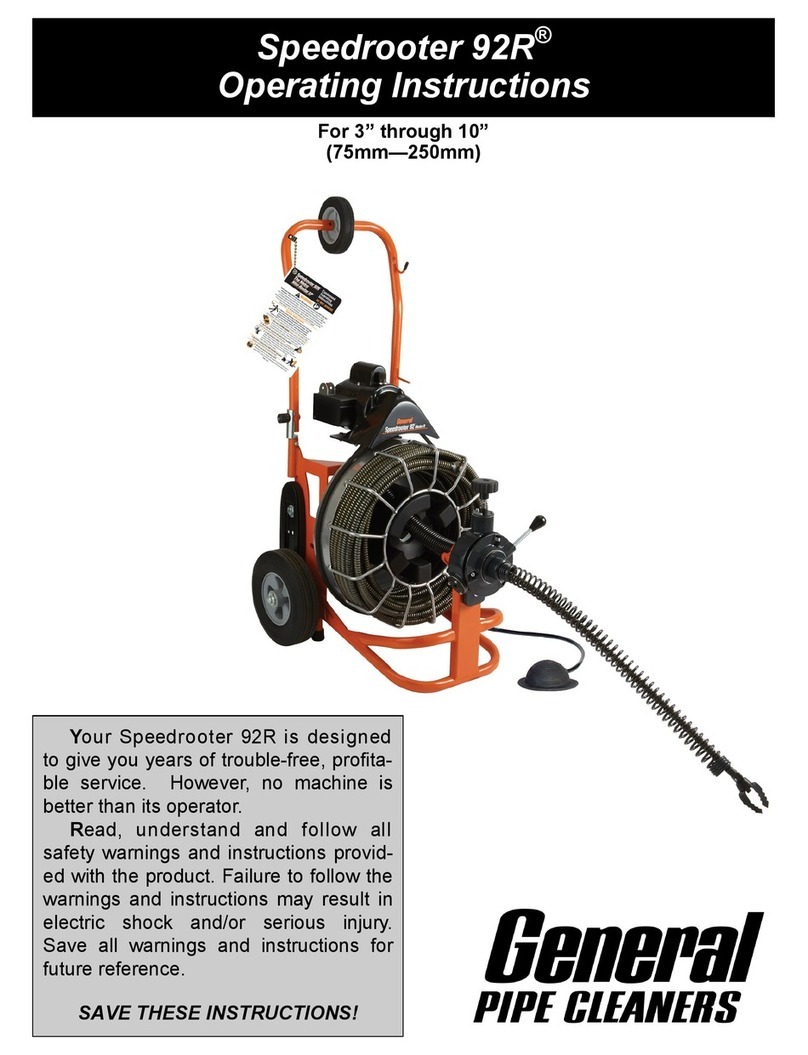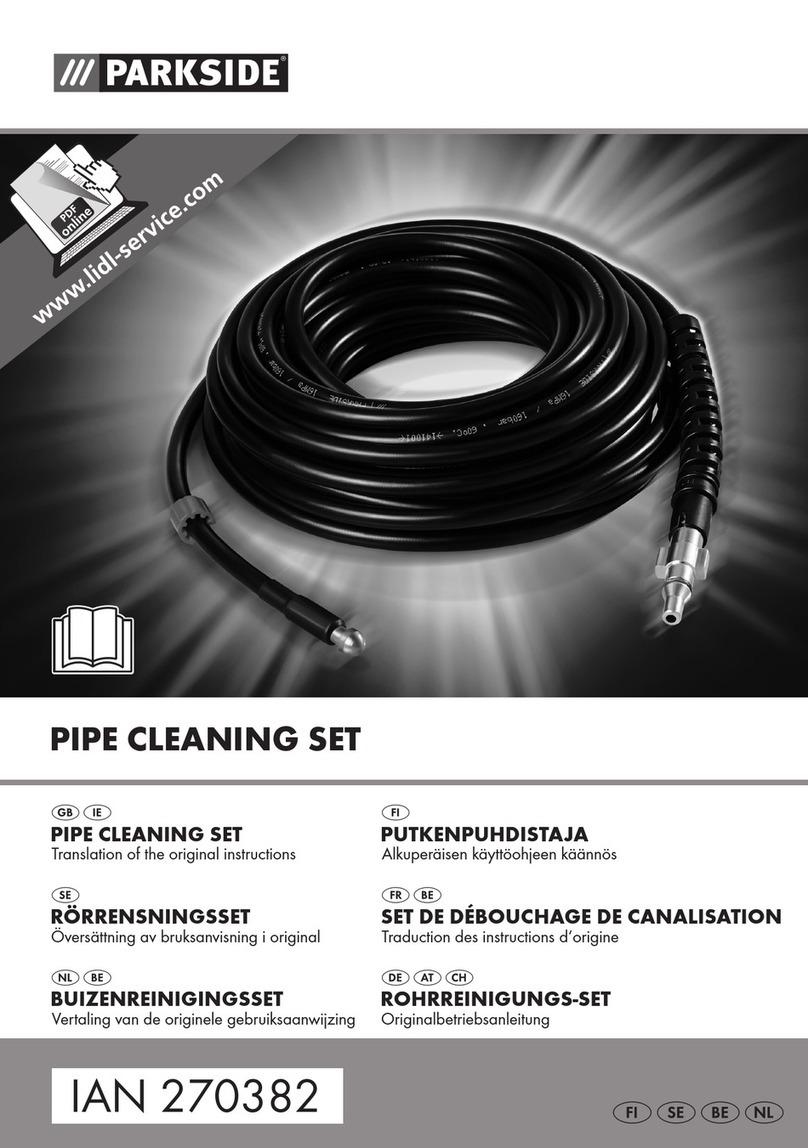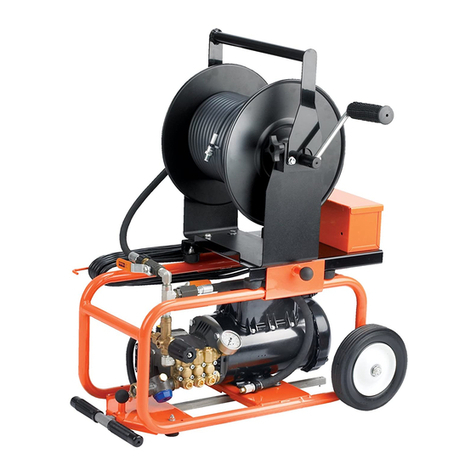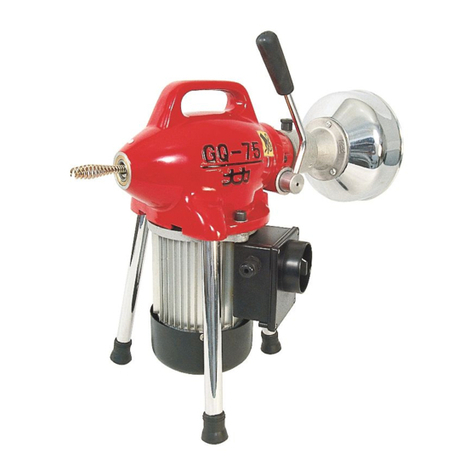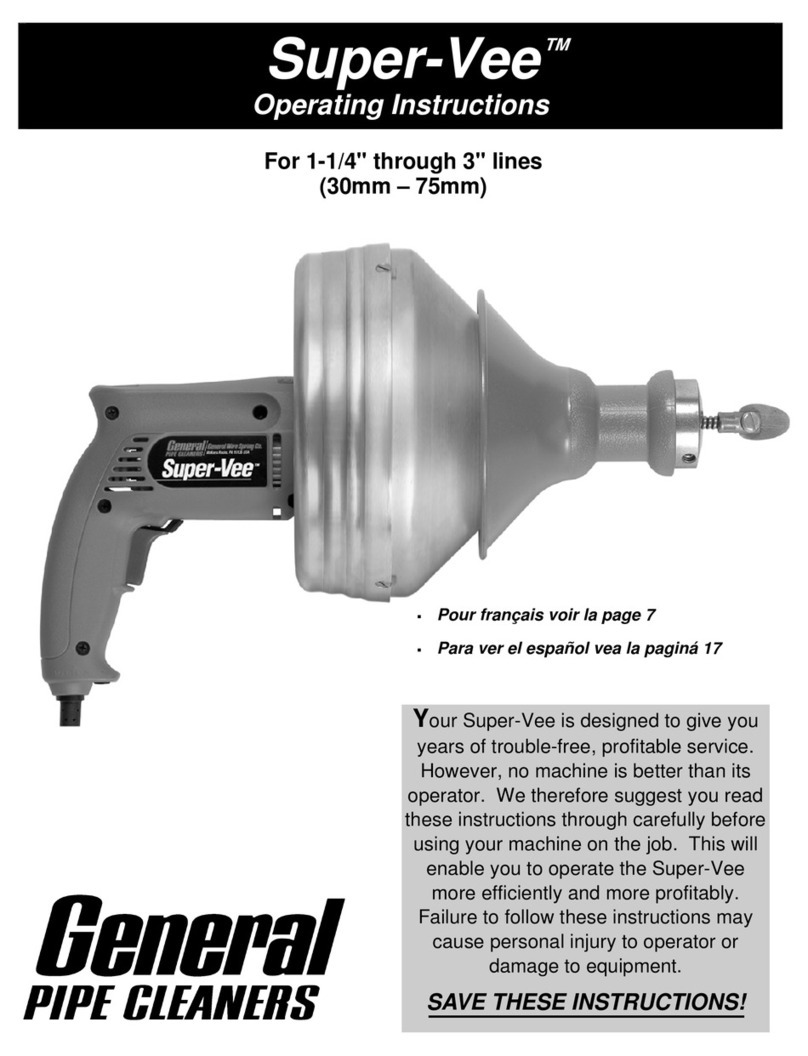
CABLE APPLICATIONS
Cable Size Pipe Size Typical Applications Max. Distance
*1/4" 1¼" to 2" Small Lines, Tubs and Shower Drains 50 ft.
*5/16" 1½" to 2" Sinks, Basins and Small Drains 50 ft.
3/8" 2" to 3" Roof Stacks and Small drains 75 ft.
1/2" 3" to 4" Roof Stacks and Medium Drains (No roots) 100 ft.
*The 1/4" and 5/16" diameter cables are for use with the Slide-On Snakentainer.
CUTTERS
You have a choice of several cutters:
AHArrowhead Starting tool, ideal for cutting and scraping.
1½UC 1½" U-Cutter Starting tool, works well in grease stoppages.
2SCB 2" Side Cutter Blade Finishing tool, for scraping inside edges of pipe.
3SCB 3" Side Cutter Blade Finishing tool, for scraping inside edges of pipe.
4SCB 4" Side Cutter Blade Finishing tool, for scraping inside edges of pipe.
3RSB 3" Rotary Saw Blade Finishing tool, for cutting and scraping.
RTR-1 Retrieving Tool To remove or retrieve loose objects.
Note: There are no fixed rules for what cutter to use. If one tool doesn't take care of a
stoppage, simply try another. Some users mix their cutters on certain jobs. For
instance, they use one 2" Side Cutter Blade with one 4" Side Cutter Blade. This
combination is especially good when working through 4" P-Traps.
OPERATION
1. Place machine within approximately 2 feet of drain opening. If you can't get the
machine this close to the opening, run the cable through a hose or pipe to prevent
cable whipping. A Sewerooter T-3 Guide Tube (T3-GT) is ideal for this. Guide
Tube Extensions (GTE) are also available.
2. Insert cutting tool into female connector (on 3/8" and 1/2" cables) at the front of the
cable and tighten in place firmly with the connecting screw and lock washer. A
good tool to start with is the Arrow Head or 1½" U-Cutter. After the line is opened,
follow with larger blades, which scrape the inside edges of the pipe, assuring a real
cleaning job. If you're having difficulty getting around a P-Trap or close bend,
attach the Flexible Leader. (For 1/2" cable only.)
3. Before stepping on the foot pedal, put the cable into the drain line. Make sure the
motor switch is set in the forward position.
DO NOT USE TOO MUCH FORCE - LET THE CUTTER DO THE WORK.
4. Don't leave too much slack in the cable since this will cause whipping. If the cable
starts to bend or build up too much twist, release pressure on the foot pedal and
rotate the drum in the opposite direction to relieve the twist on the cable. Push any
excess cable back into the drum and then continue.
5. If you're having trouble getting around bends, try putting the machine in reverse
while applying steady pressure. Don't do this for more than a few seconds at a time
since this could cause tangling or kinking in the drum.
